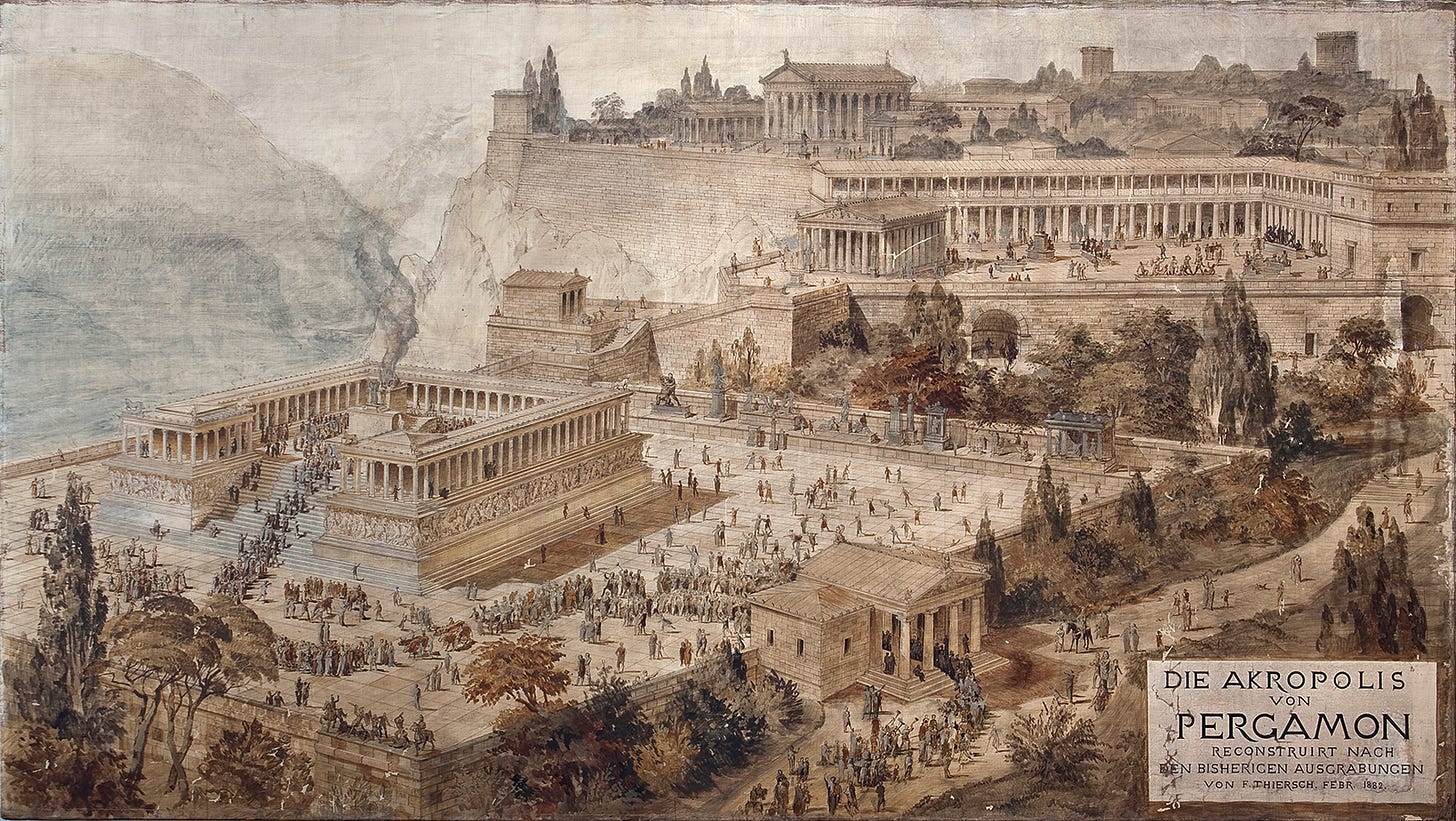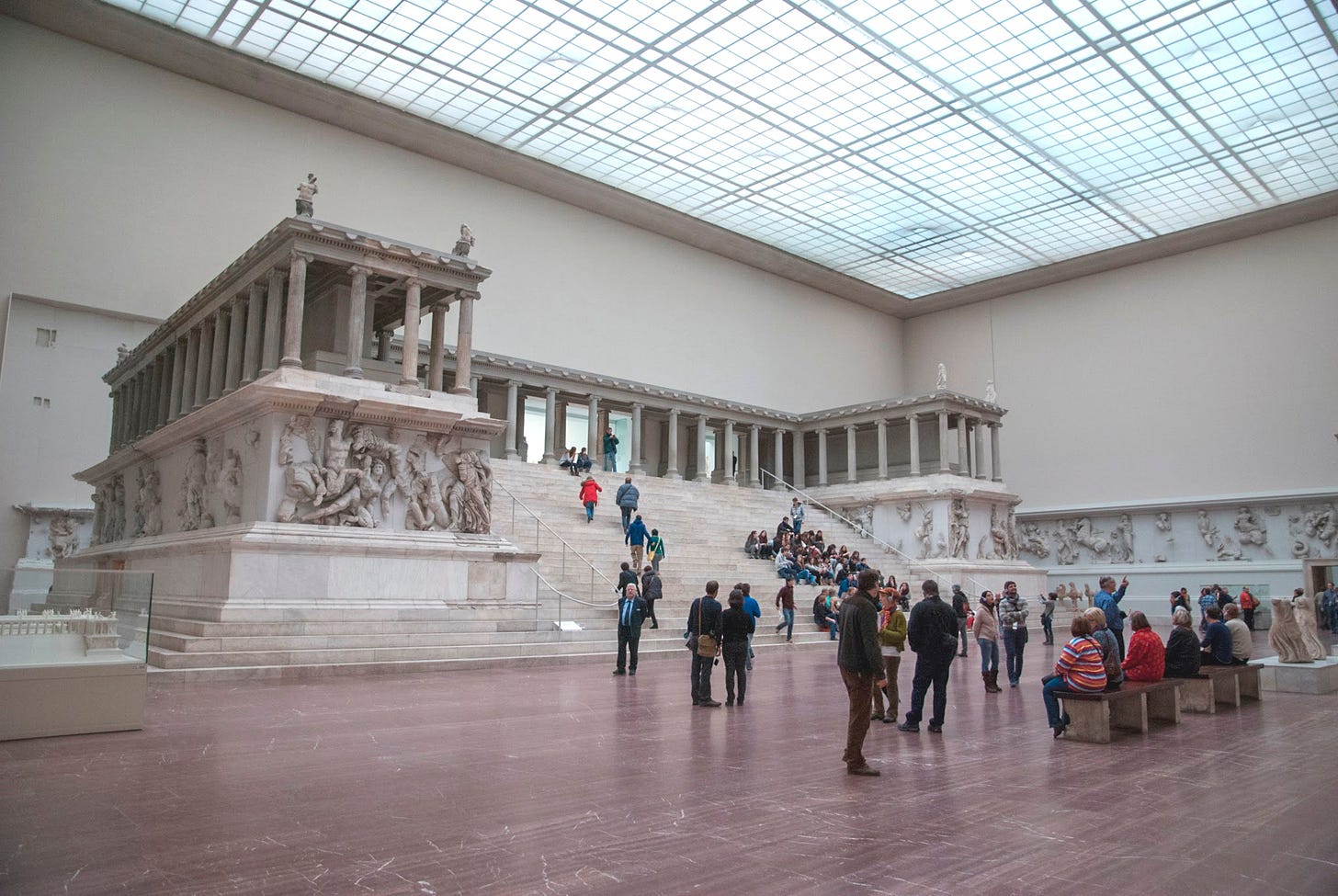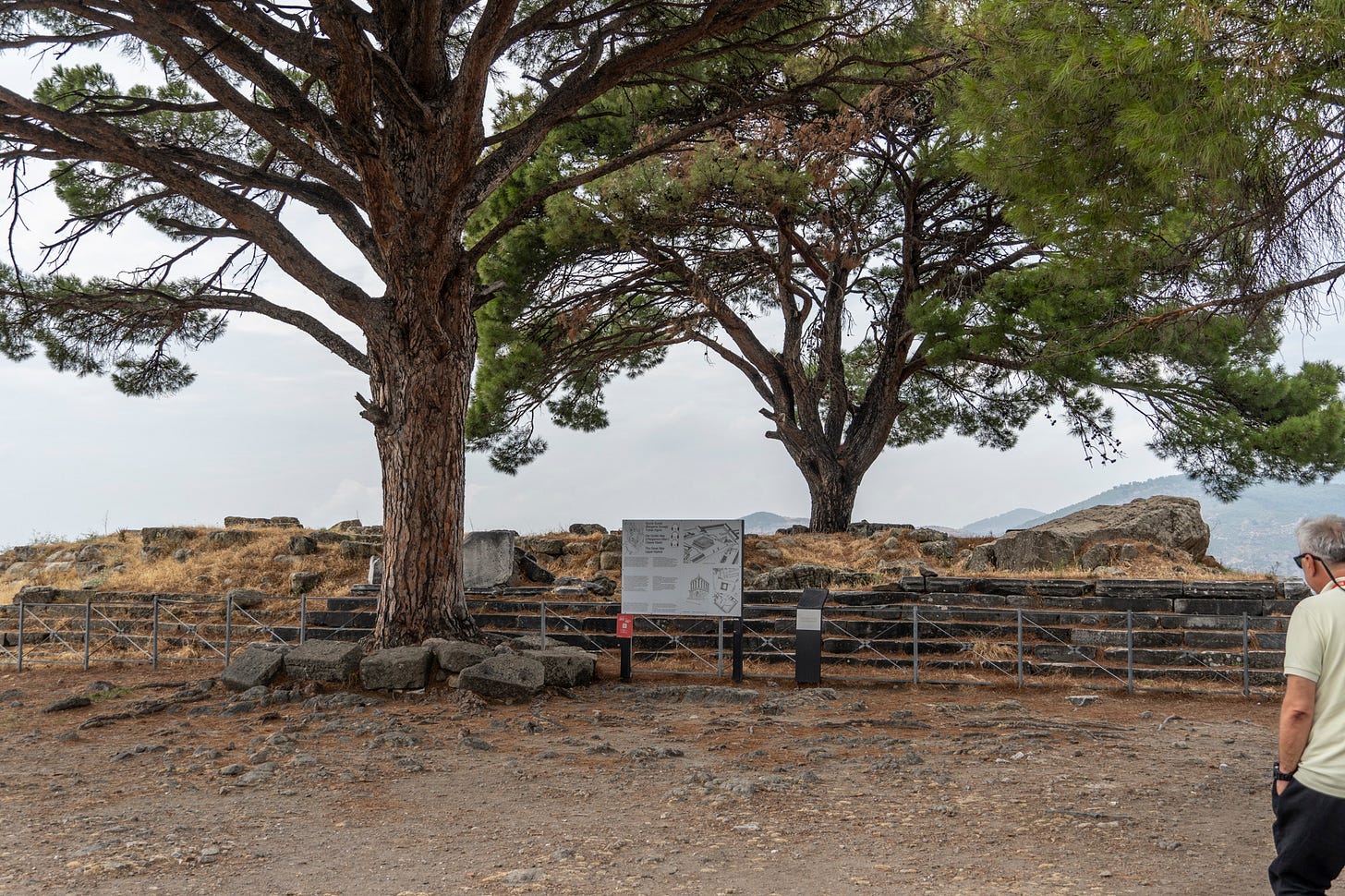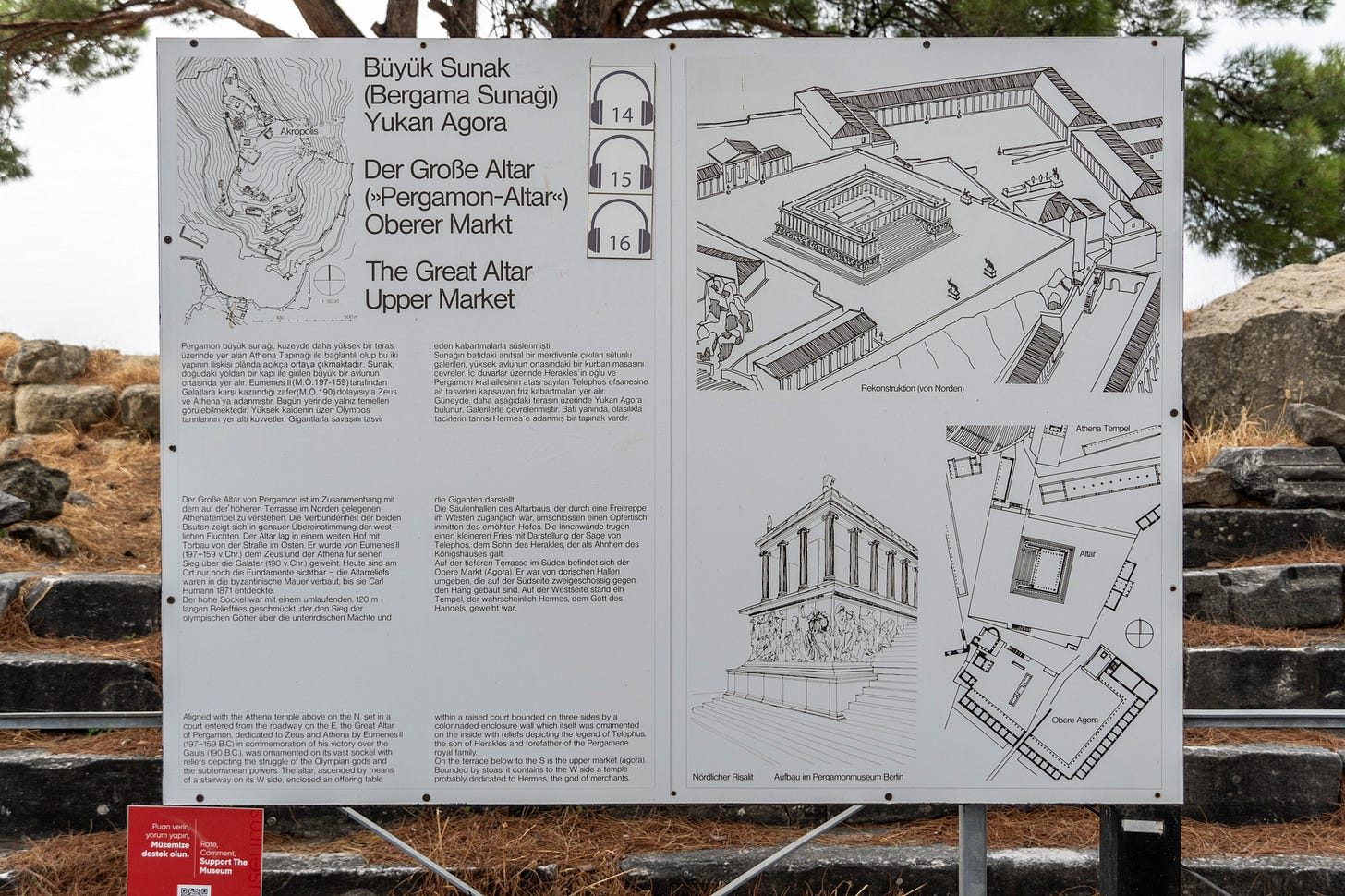After breakfast near Troy we began the three and one half hour drive to our next stop circling the Aegean, the ruins at Pergamon. Pergamon was a Hellenistic/Roman archaeological site in Bergama about 130 miles to our southeast. There were thunderstorms through the morning and sudden flooding - enough to cause some serious traffic delays on the Turkish motorways.
Above is an illustration of what Pergamon would have looked like in its day. The formal building in the center left is the Altar to Zeus. The reconstruction of this altar - built with the original artifacts from Turkey - is now in a museum in Berlin, as shown below. Nancy and I visited this museum in late 2013.
The magnificence of this altar reflects its importance. Zeus and the entire pantheon of Olympian gods were at the very heart of the Hellenistic understanding of the world. With that in mind, I find it very difficult to imagine how people of the time might think about a problem. I would guess that you would first need to decide whose domain your problem fell into and then make an appeal and perhaps an offering to that God. I’m sailing to Crete and want to avoid storms — then I’d appeal to Poseidon, master of the sea.
This entire altar is wrapped in a sculpted narrative of a battle - the great mythical battle between the Giants and the Olympian gods, a fight known as the Gigantomachy. The Gigantomachy represented a migration from the old gods to the new Olympian Gods: Zeus, Hera, Apollo, etc. These new Gods were more suited to the new leaders: the sophisticated democratic Athenians and their neighbors, the ever extreme, ever pure, Spartans. Greek myths preserve the stories of the Olympian Gods.1 The Gigantomachy is also seen as a migration from barbarism, the dark ages to an age of civilization. A more modern era for them, yet an ancient one for us.
The rain had cleared by the time we arrived in Bergama where the ruins are located. At the base of the acropolis we hopped into a small cable car for a quick ride almost 1,000’ up to the top where we stepped out into a small cluster of food and souvenir stalls. Our guide, Oz, led us past these shops up a rough ancient road into the ruins. There are few trees, the slope is steep and the view is wide-open. I could see down onto the town below and the mountains in the distance. It was still overcast, but warm.
One of our first stops was at the remains of the Altar of Zeus in a large open paved square. As you can see from the two photos below this part of the ruins pale in comparison to the reconstructed Altar of Zeus in Berlin shown above.
During the Hellenistic era the Attalid dynasty ruled Pergamon from 282 BC until 129 BC after which the city became Roman. The Attalids created a city that was a center of culture and art in the ancient world. When they built the Altar they were also commemorating a victory over the invading Galatians. Pergamon was funded in part with the fortune left for safe keeping by a successor of Alexander the Great.
The Attalids built a great library here, second only to the library at Alexandria in Egypt. They made contributions to contemporaneous sites of culture in the Greek world at Delos and Delphi. Pergamon became a center for artists and intellectuals. The sculpture from here was known for its dynamism perhaps best portrayed by the sculpture, ‘The Dying Gaul’. A Roman era copy of ‘The Dying Gaul’ is on exhibit in Rome at the Capitoline Museum.
The amphitheater at Pergamon is one of the steepest in the world and would hold 10,000 people.


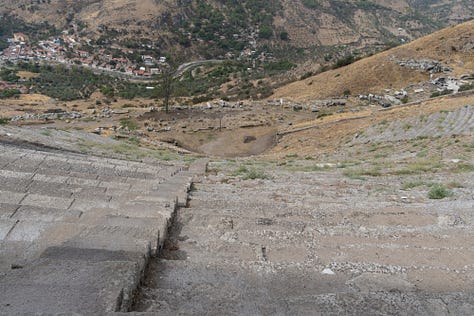
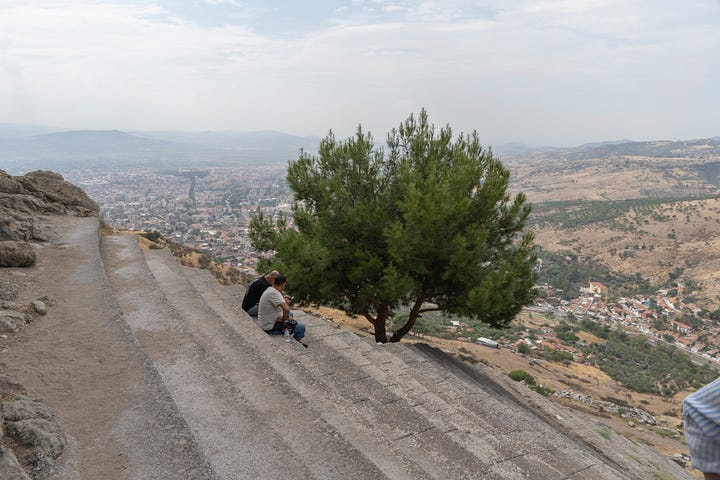
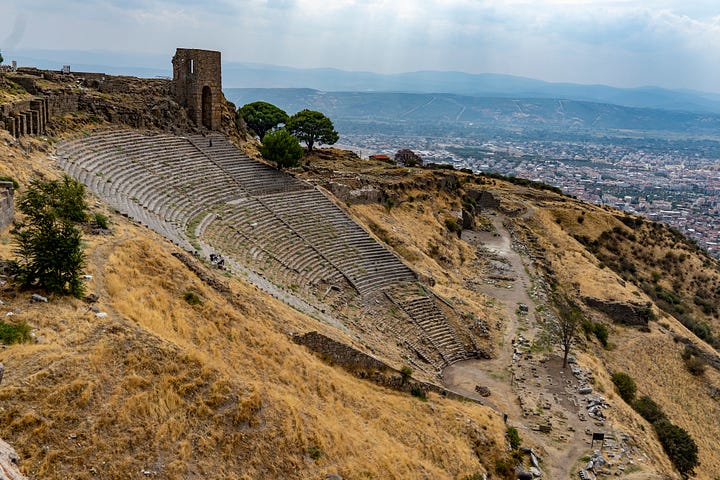
There are also ruins of temples and the library above the amphitheater.
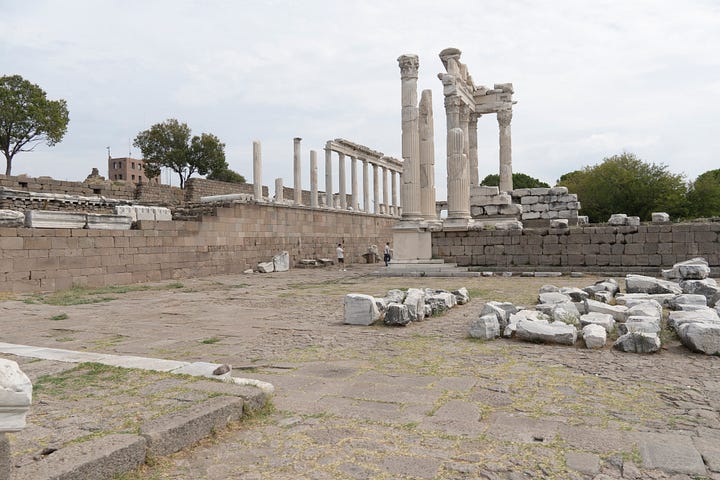
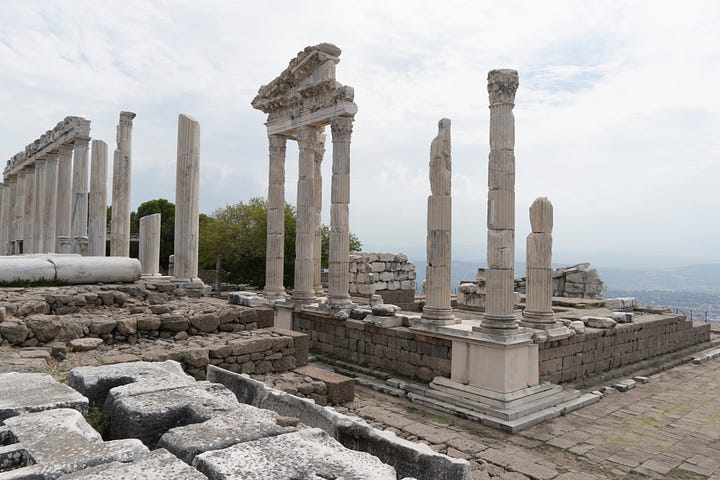
It’s always difficult looking at ruins to remember they weren’t the minimalist white of plain stone we see today but were decorated in color.
The modern reconstructed stoa at the Agora in Athens now used as a museum, was copied from a stoa here at Pergamon. The reconstructed stoa is a beautiful two story open building, all done in polished stone with many well proportioned columns lining the porch. I’ve been there twice. Even on a hot afternoon its cool inside. It’s elevated to catch any breeze.
Our driver wanted to us to a real Turkish lunch cafe in Bergama. So we did. So good.
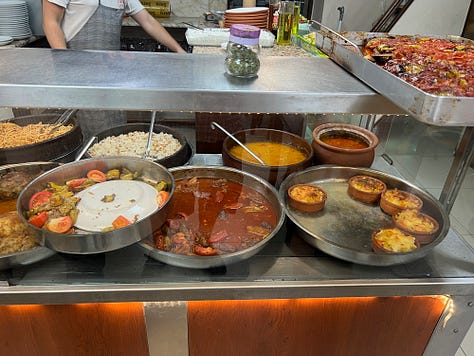
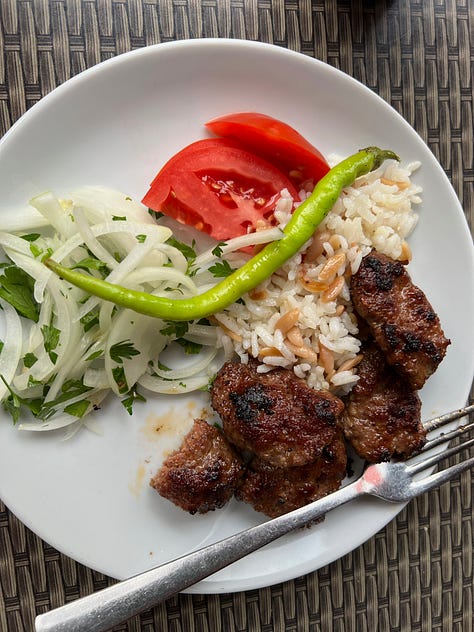
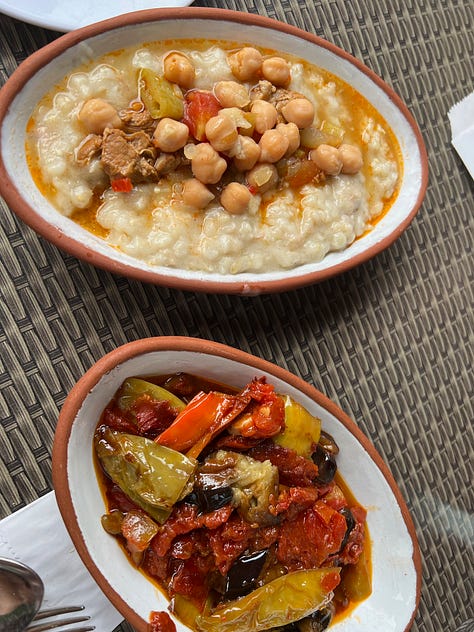
After lunch we went to see the shrine to Asclepius just outside the town, which during Roman times had been expanded and developed into a spa. Asclepius was the god of healing and a son of Apollo. From Greek myth we know Asclepius was raised by a centaur named Chiron who taught him medicine and that a snake he cured also taught him medical secrets. When Asclepius was practicing medicine his office sign was a wooden walking stick with a snake wrapped around it - a symbol still associated with medicine today.
Our guide explained ‘incubation’ to us. Patients were expected to sleep overnight on the grounds, then their dreams could be analyzed by the priests who managed their cure.
An ancient avenue runs into the site. It would have been lined with shops. Selling to the sick.

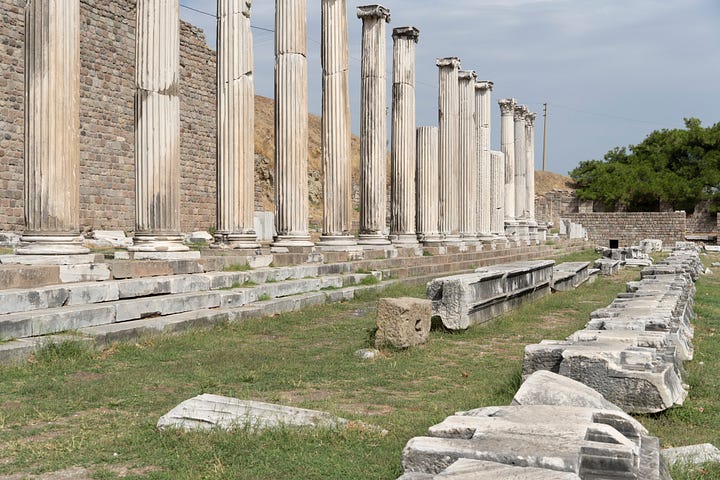
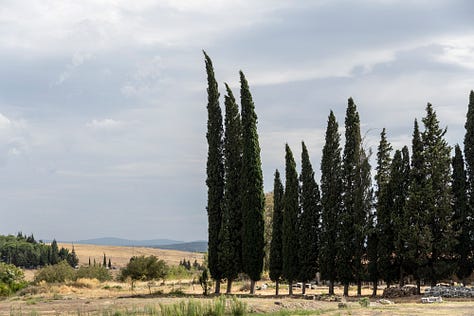
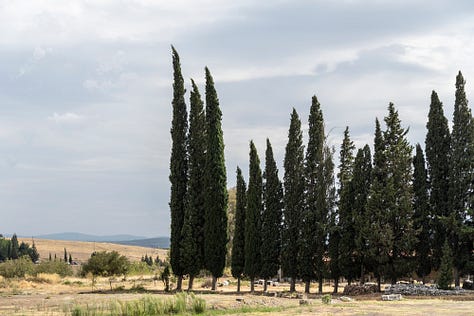
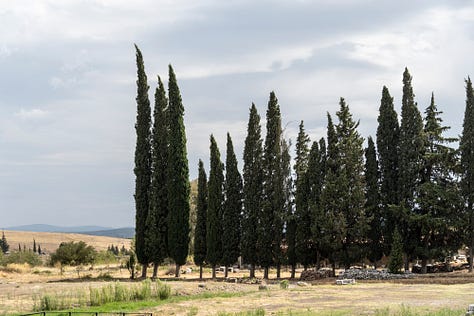
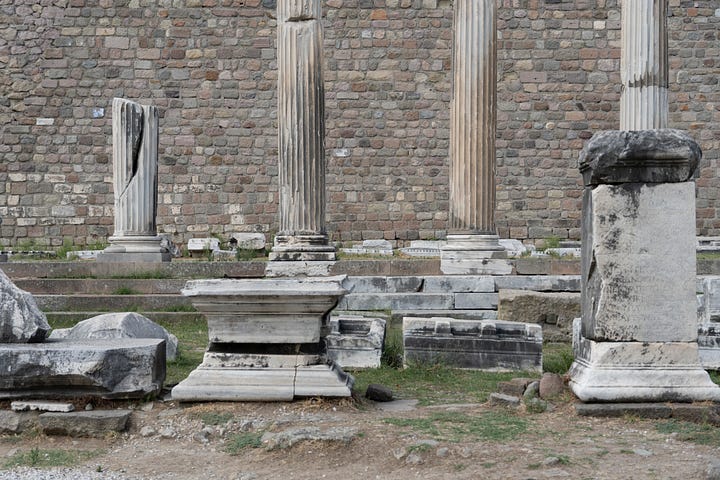
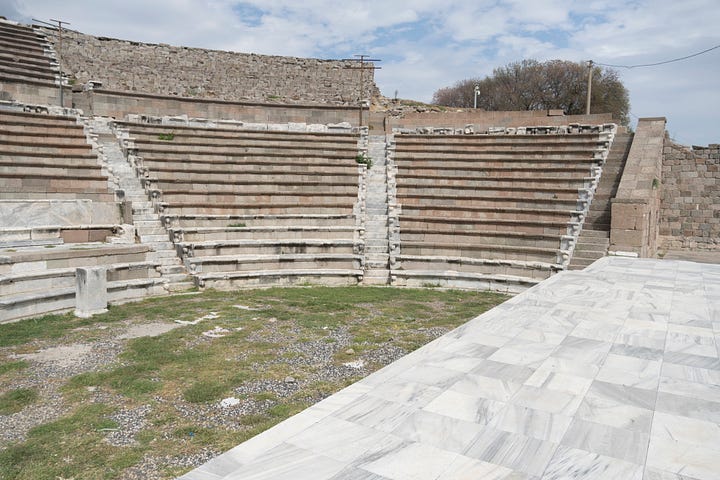
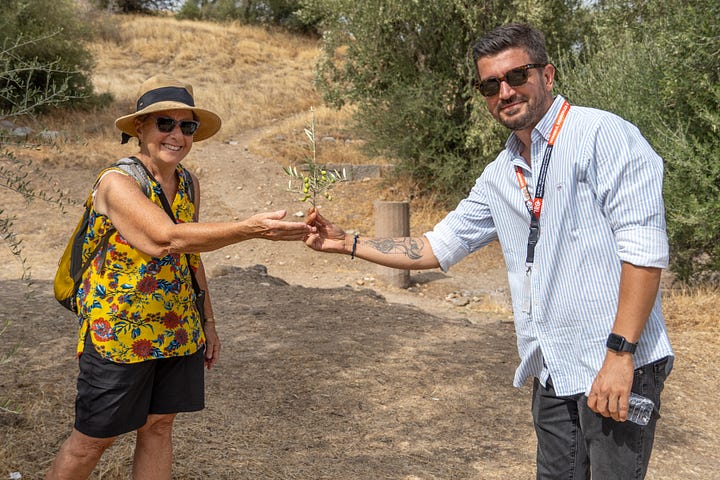
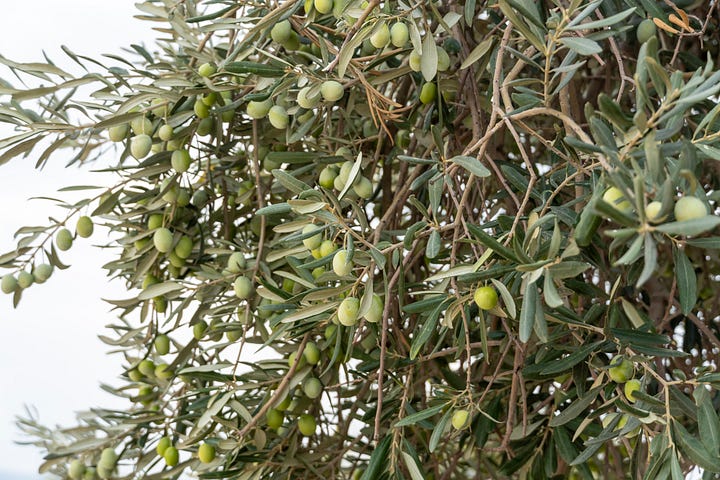
There is a similar, even grander site dedicated to Asclepius in Greece - just on the other side of the Aegean at Epidarus in the Peloponnese.
- - -Credits:
The first illustration, “Reconstructed view of the Pergamon Acropolis, Friedrich Thierch, 1882,” is in the Public domain via Wikimedia Commons.
References:
The Hellenistic Age podcast - episode 86 : ‘The Attalid Kingdom of Pergamon”
There are many sources, but I think the most readable retelling of many of the Greek myths can be found in Stephen Fry’s ‘Mythos’.




